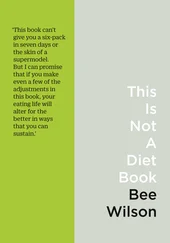Even in the most industrialized countries, like Britain and the Netherlands, over 40 per cent of people worked in agriculture. In the other Western European countries, the ratio was over 50 per cent and in some countries up to 80 per cent.
D. Defoe, A Tour Through the Whole Island of Great Britain (Harmondsworth: Penguin, 1978), p. 86.
In most developing countries, in which capitalism is still underdeveloped, the situation is still not too dissimilar from that found in Western Europe in Smith’s time. In the poorest ones, child labour is still prevalent, while a lot of people are still tenants of semi-feudal landlords. Anything between 30 per cent and 90 per cent of the workforce in these countries may be self-employed, many of whom are engaged in subsistence farming.
Depending on the country, 60–80 per cent of those who work for capitalists work for small and medium-sized enterprises(SMEs), employing less than a few hundred people. SMEs are defined as enterprises employing less than 250 people in the European Union and less than 500 in the US.
At the time London was the biggest city in Europe and the second biggest in the world after Beijing, which had over 1.1 million people. Having just lost the American colonies, the British colonial territories at the time when TWON came out consisted of (parts of) India, Canada, Ireland and around a dozen and a half Caribbean islands.
The information in the rest of the section is from H.-J. Chang, Kicking Away the Ladder: Development Strategy in Historical Perspective (London: Anthem Press, 2002), pp. 93–9, unless otherwise specified.
All the information on the Bank of England banknotes is from the website of the Bank of England. See: http://www.bankofengland.co.uk/banknotes/Pages/about/history.aspx.
Yes, that’s the scientist, who also doubled as an alchemist and a stock market speculator.
A. Maddison, Contours of the World Economy , 1–2030 AD (Oxford: Oxford University Press, 2007), p. 71, table 2.2. The long-term historical growth figures in the next few paragraphs are also from the same source.
Britain’s cotton textile output grew at 1.4 per cent per year during 1700–1760, but grew at 7.7 per cent per year during 1770–1801. Especially between 1780 and 1790, the growth rate was 12.8 per cent per year – high even by today’s standards but astonishing at the time. The iron industry increased its output by 5 per cent per year between 1770 and 1801. These figures are calculated from N. Crafts, British Economic Growth during the Industrial Revolution (Oxford: Clarendon Press, 1995), p. 23, table 2.4.
See J. Hobson, The Eastern Origins of Western Civilization (Cambridge: Cambridge University Press, 2004) for evidence on how the early scientific and technological developments in the West drew extensively from the Arab, Indian and Chinese worlds.
These included the flying shuttle (1733) and spinning jenny (1764) in the textile industry, coke-smelting (1709) in steel-making and various processes for large-scale sulphuric-acid manufacture (the 1730s and the 1740s) in the chemical industry.
An authoritative and balanced discussion on this is provided by P. Bairoch, Economics and World History: Myths and Paradoxes (New York and London: Harvester Wheatsheaf, 1993), Chapters 5–8.
B. Hartmann and J. Boyce, Needless Hunger (San Francisco: Institute for Food and Development Policy, 1982), p. 12.
Unlike political revolutions, such as the French Revolution or the Russian Revolution, economic revolutions do not have clear start and end dates. The Industrial Revolution has been defined as as long as 1750–1850 and as short as 1820–70.
R. Heilbroner and W. Milberg, The Making of Economic Society , 13th edition (Boston: Pearson, 2012), p. 62.
N. Crafts, ‘Some dimensions of the “quality of life” during the British industrial revolution’, Economic History Review , vol. 50, no. 4 (November 1997): table 1, p. 623, for the 1800 figure, and table 3, p. 628, for the 1860 figure.
See Chang, Kicking Away the Ladder , and H.-J. Chang, Bad Samaritans: Rich Nations, Poor Policies and the Threat to the Developing World (Random House, London, 2007), for further details.
Walpole’s official job title was actually the chief minister, but we may be excused calling him the first prime minister. He was the first head of British government who controlled all ministries – before him, there had been two or even three joint heads of government. Walpole was also the first one who took up residence (in 1735) at 10 Downing Street, the famous official residence of the British prime minister.
Through the provision known as ‘extra-territoriality’, these treaties also deprived the weaker countries of the ability to try foreign citizens for crimes committed in their territories. Some other unequal treaties demanded that the weaker countries cede or ‘lease’ parts of their territories; China ceded to Britain Hong Kong Island in 1842 and Kowloon in 1860, while Britain ‘leased’ the so-called New Territories of Hong Kong for ninety-nine years in 1898. Unequal treaties often forced the weaker country to sell foreigners the rights to exploit natural resources (e.g., minerals, forestry) for minimal fees.
A. Smith, An Inquiry into the Nature and Causes of the Wealth of Nations (Oxford: Clarendon Press, 1976), p. 181.
Germany took Tanzania, Namibia, Rwanda, Burundi, Togo and so on, although many of these were given to the winners in the First World War. The US got Cuba and the Philippines, while Belgium took Congo. Japan colonized Korea, Taiwan and Manchuria (the north-eastern part of China).
Between 1870 and 1913, per capita income growth in Latin America saw a massive acceleration, from - 0.04 per cent during 1820–70 to 1.86 per cent at the end of this period, making the continent the fastest-growing region in the world (higher than that of the US, 1.82 per cent, in second place).
Calculated from A. Maddison, The World Economy: Historical Statistics (Paris: OECD, 2003), p. 100, table 3 c.
To simplify the story, the 1932 famine happened because too much food was shipped out of the rural areas, following the 1928 agricultural collectivization. The rapidly rising urban population had to be fed, and grains had to be exported to earn foreign exchanges with which to import advanced machinery that the Soviet Union needed for industrialization.
These numbers and information in the rest of this paragraph are from C. Dow, Major Recessions: Britain and the World , 1920–1995 (Oxford: Oxford University Press, 1998), p. 137, table 6.1 (for 1929–32) and p. 182 (for 1932–7).
This point is explained in an accessible way by Stephanie Flanders, the BBC economics journalist, at the following blog post: http://www.bbc.co.uk/blogs/thereporters/stephanieflanders/2009/02/04/index.html.
Читать дальше












